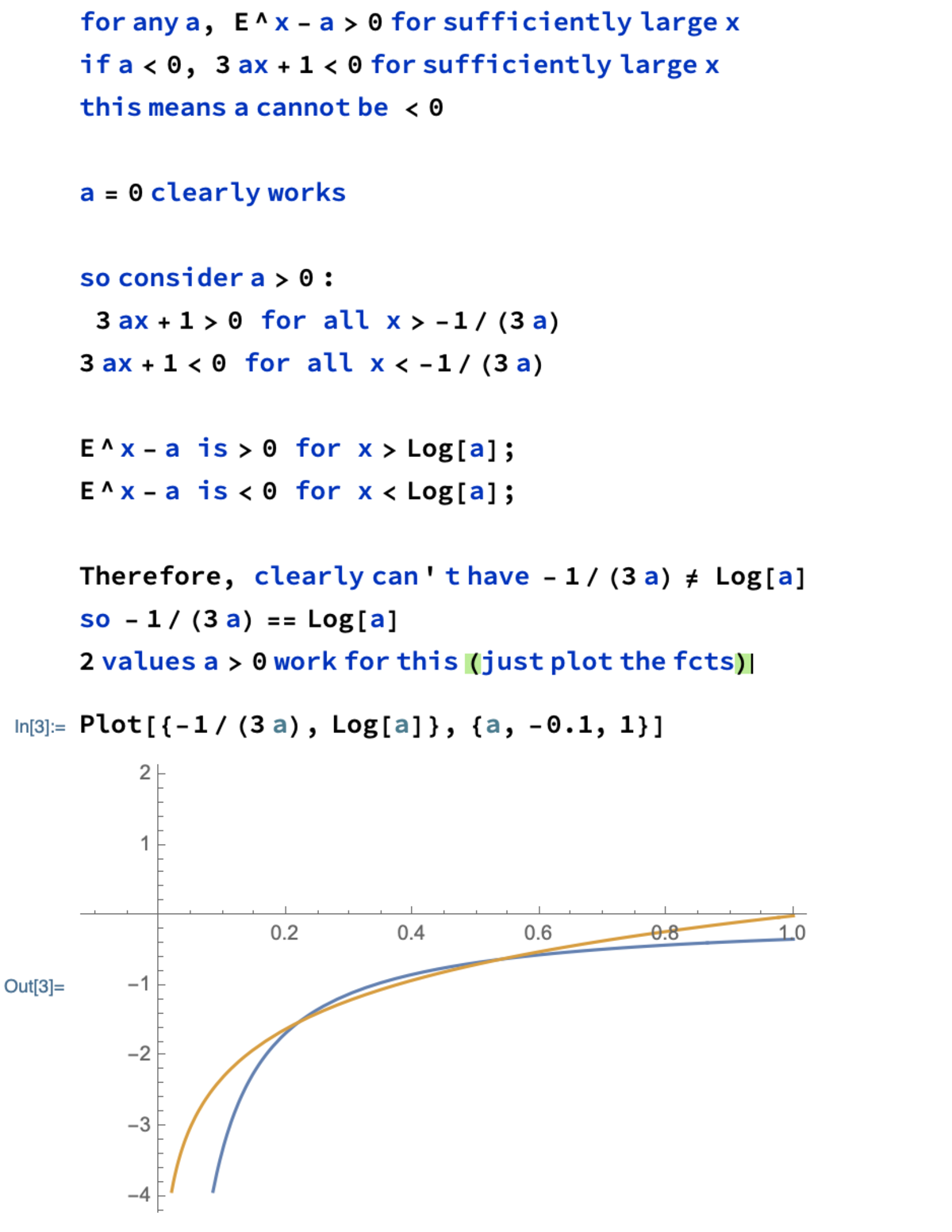How many a's are there?
Let f ( x ) = ( e x − a ) ( 3 a x + 1 ) . If ∀ x ∈ R , f ( x ) ≥ 0 , how many possible values for a that satisfies the condition?
If you think there's infinite many, submit − 1 .
The answer is 3.
This section requires Javascript.
You are seeing this because something didn't load right. We suggest you, (a) try
refreshing the page, (b) enabling javascript if it is disabled on your browser and,
finally, (c)
loading the
non-javascript version of this page
. We're sorry about the hassle.
3 solutions
Hi, can you help me with this please: Exam question
Case 3 is not understanding make it clear sir
This question is interesting but somewhat computationally tedious.
For a product of two functions to always be positive, both functions must be negative at the same time and positive at the same time. Since both are continuous, according intermediate value theorem they must have roots at the same value of x. Since both functions are monotone increasing, around these roots, their signs must be identical.
We see that 0 = 3 a x + 1 implies x = − 1 / 3 a and so we want a such that a = e − 1 / 3 a . This equation is transcendental; forcing students to use direct computational methods to gain any insight as to how many solutions exist.
On a math contest it would be better to write questions which allow students to more easily visualize the solutions to such tricky equations- perhaps e x = x or something related to that would simplify it enough to avoid the use of a table of values, or other brute force tools.
However I think this is a very interesting way to bring up the intermediate value theorem. I look forward to other problems you come up with!

Case 1: a < 0
In this case, ( e x − a ) will always be positive. However, the other term ( 3 a x + 1 ) will be negative when x > − 3 a 1 . So, f ( x ) cannot be nonnegative for all real values of x . Thus, there is no solution when a < 0 .
Case 2: a = 0
The function reduces to f ( x ) = e x . And, e x > 0 for all values of x . Therefore, a = 0 is a valid option which satisfies the given condition.
Case 3: a > 0
We see that, ( e x − a ) is negative when x < ln a , zero when x = ln a , and positive when x > ln a . Similarly, ( 3 a x + 1 ) is negative when x < − 3 a 1 , zero when x = − 3 a 1 , and positive when x > − 3 a 1 . If there is an interval between ln a and − 3 a 1 , we find that one term is going to be positive and another negative. This arrangement makes f ( x ) negative. So, there cannot be any gap between ln a and − 3 a 1 for f ( x ) to be always nonnegative. Hence, acceptable values of a need to satisfy the equation ln a = − 3 a 1 .
The equation ln a = − 3 a 1 has two solutions. These are a ≈ 0 . 2 2 0 4 , 0 . 5 3 8 4 .